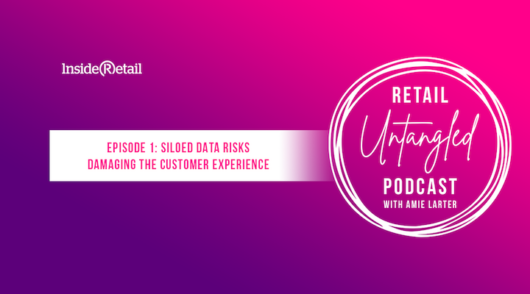As Australia begins the process of reopening, widespread lockdowns now appear a thing of the past. State borders are opening up. Schools are welcoming students back. Bars, restaurants and shops are all preparing for a return to ‘normality’.
But what ‘normality’ looks like for retailers is increasingly moot. In an effort to understand the factors shaping shopping patterns and preferences, there is no shortage of speculation as to what the future might hold. But rather than taking a punt on what lies ahead, the smart money may well be on understanding and learning from the adversity of the last two years.
Mick Moore is the managing director of Scalene Group, a retail-specific data analytics consultancy with a global clientele. He points out that retail is always in a state of change and what we’ve experienced through the course of the pandemic is this state of change ‘on steroids’.
“No-one has been locked at home like this before on this sort of scale and been told they can’t go to the shops or go to restaurants. It’s an external shock to consumer behaviour that makes things much more obvious, and this really serves to highlight sub-optimal aspects of a business,” he said.
Much of Scalene Group’s work is in the areas of range and space optimisation, and it is here, said Moore that the importance of a resilient, flexible and localised space and range allocation has been integral in helping retailers both survive and thrive in this period of upheaval.
In late 2018, a Hong Kong pharmacy chain approached Scalene Group to help improve its space allocation. Then in early 2019–with Scalene’s recommendations newly implemented–the archipelago was rocked by a year of civil unrest, closely followed by the onset of the pandemic.
Moore told Inside Retail implementing an improved space allocation helped the company continue to trade successfully through that period of upheaval.
“For most retail businesses there is significant opportunity to deliver an improved base space allocation and even when the local market is disrupted in a surprising way, these improved space allocations support strong growth even if not perfectly tailored to the new circumstances.”
Setting space and range effectively can help make retailers more resilient to changes in consumer behaviour, but businesses must also build flexibility into their processes, added Moore.
He pointed to work undertaken for a leading UK supermarket chain where a major reset was undertaken in response to shifting customer preferences and shopping patterns driven by Covid lockdowns.
Data analysis showed people were choosing to shop locally where possible and avoiding large shopping complexes. People were also spending more on fresh produce, meat and ingredients for baking rather than packaged meals, biscuits and confectionery.
“The right answer for this retailer involved a reweighting toward fruit and veg, meat and poultry at the margins, particularly in stores located closer to residential neighbourhoods. If you can get good at always moving with the times that’s where you will get the most value.”
In accordance with what has been seen abroad, retailers here in Australia have seen positive results from providing a localised response to ranging and space allocation.
Interestingly, Moore has seen this borne out in a ‘big box’ style office supply retailer.
“They’ve benefitted from the pandemic with so many people working from home, but people are buying different things. They’re spending more on technology and less on basic office supplies. People think there’s no space constraint with these big-box retailers, but in reallocating category space to better align to these shifts in customer demand, they’ve been able to deliver incremental sales growth of over five per cent.
“If you do everything at a national level, on average you’ll be right, but you’ll miss a pile of opportunities that are evident at a local level. That’s where the big prize is, local nuance.”
According to Moore, one thing we can say about the pandemic is that retail has been transformed. There will be some snap-back to pre-pandemic normality, but exactly how much is unknown.
“This heightened period of change has really shown up inadequacies, and it’s through taking these lessons on board we can make our businesses more robust. This in turn will set them up for whatever ‘Covid normal’ presents.
“Throughout the pandemic, our work has illustrated that one of the best ways to deal with uncertainty is to regularly review how customer behaviour can inform an individual store’s space allocation and ranging. Staying focused on what is happening right now in your market and responding quickly will reduce some of the anxiety over what might lie ahead.”






